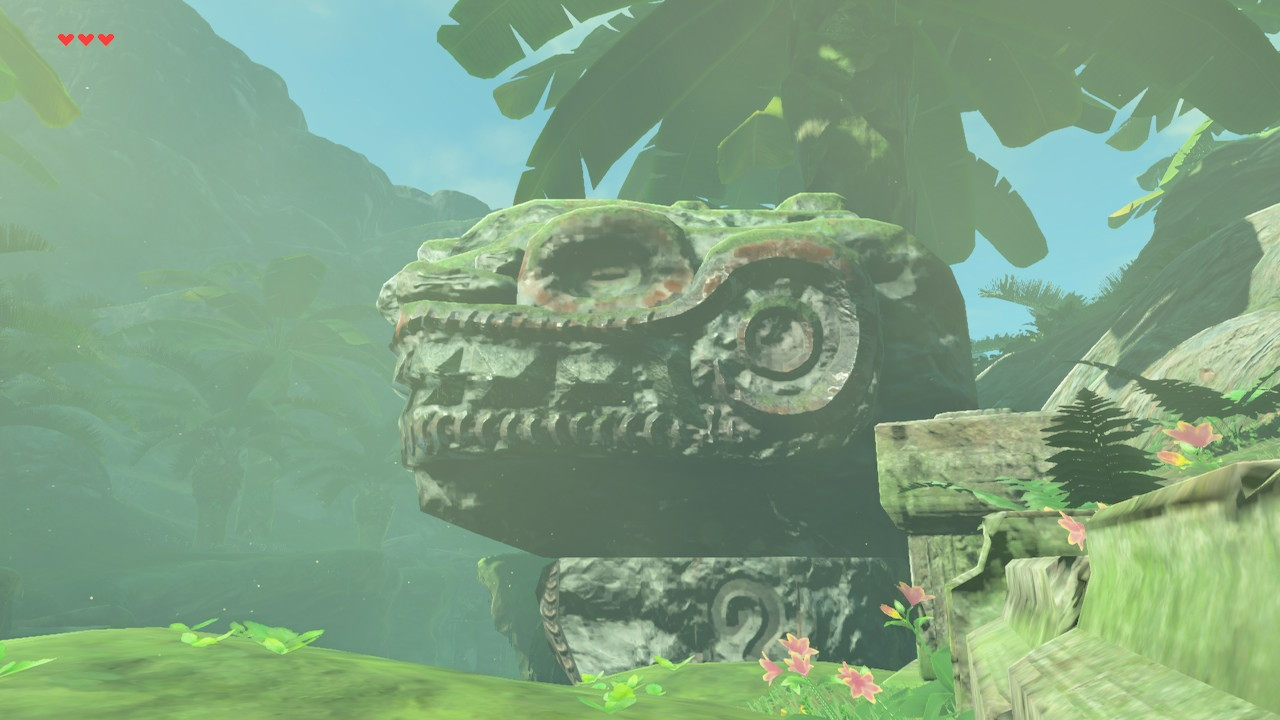Zelda’s Mythology
In the beginning, the world was created by three goddesses: Din created the mountains and landscape, Nayru the water and sky, and Farore the trees and creatures of the world. When their job was finished, they left the world. But before they did, they left in their wake three golden triangles: the triforce.
This is the mythology of the Legend of Zelda series. First introduced in Ocarina of Time, the three goddesses became the foundation for many of the underlying mythical narratives of the series. This mythology, however, is only found with Hylians, rather than everyone in the world. Some of the residents, such as the Zora or the Gerudo, have their own patron deities they worship instead of the three goddesses.
In other instances, we have the goddess Hylia - sometimes seen in connection to the three goddesses, and sometimes completely separate. Born in the human form of the princess Zelda, Hylia is also the mythological founder of the Royal Family, cementing the family as divinely wrought. In some games, like Breath of the Wild, Hylia seems to be the only goddess present, while in others Hylia is mixed with the knowledge of the original three.
There’s a reason I’m talking about Zelda mythology, and not just because I love Zelda mythology. I’m talking about it because Zelda’s mythology is surprisingly complex, both in how it’s understood in game and outside of game.
For the in-game mythology, it’s a lot more than just the story that gets told to give flavour to the world. It’s there as story, sure, but it’s also present as an important facet of history, architecture and landscape. The history of Hyrule is forever marked by the presence of the story of the goddess/es, particularly in the presence of the Triforce - the mystical wish-bearing divine object the goddesses left behind them. In Ocarina of Time. The presence of the Triforce was almost metaphorical - it’s physical presence wasn’t in our own physical realm, but it was rather a more spiritual presence in a spiritual realm. In future games, the triforce becomes more directly manifest, for example seeing the direct physical triforce being touched by the King in Wind Waker. The trials involving the Triforce has been etched into the history of Hyrule, and sometimes passing into historical legend and therefore becoming a type of mythology itself.
The architecture of the game-worlds often reflect the presence of these mythologies and ideologies. There is often a marked difference in the way one sees the world and the experience of these religions when in different areas of the world. In Ocarina of Time, for example, the three goddesses are represented by a multiplicity of threes in many areas of the world, with iconography of them being present in Hyrule castle and in several of the Temples. In contrast, the temple in the Gerudo wasteland has a singular female figure, often paired with a snake. The architecture in Breath of the Wild also hearkens to different aspects of mythology and ideology in different time periods. Areas such as the Lanayru Promenade are marked with stories related to the Goddess Hylia, whose statues are scattered everywhere and referred to as the only goddess, hinting at a monotheistic understanding by this point in Hylian history. In contrast, the Zonai ruins hearken back to an earlier time period of Hyrule’s history, where the iconography is more animalistic, typically related to amphibians or lizards.
Some Zonai ruins from Breath of the Wild - a stark contrast to the clean Western architecture of the Hylian part of Hyrule.
And speaking of the Lanayru Promenade, the landscape is marked by the mythology and the lived reality of these mythologies. The landscape leading from Kakariko village to the Promenade appears like a road, even though it’s not marked on the map. Following from the Promenade the unmarked road continues all the way to the Shrine which sits atop Mount Lanayru. The pathway seems to be a pilgrimage trail, one that’s alluded to by Zelda in a memory. Even though it seems no one is still using the trail, its constant use by the people over what must have been at least several decades is still marked on the landscape.
This is because mythology, ideology and religion are all lived realities. They are not just stories which are repeated in words, but are fully experienced, embodied and performed. Someone who follows Islam, for example, may have their ideologies affect their clothes, their food, and their daily actions. The way the religions are present in Hyrule reflect this reality.
But Zelda’s complex mythology also impact the out-of-game world. If mythology is what guides us, then Zelda’s mythology often works outside of the game world as much as it does within it. During research into Zelda, I met someone who had the Triforce tattooed on their arm. They explained they liked to approach things with an equal measure of Wisdom, Power and Courage - reflecting the nature of each of the three goddesses. Like the Hylians in the game, my participant marked themselves with their mythology, seeing their mythology as more than just words but as a lived reality. Like the Hylian landscape, their own body has been marked with their mythology.
The mythology is a performance - one that is lived out in architecture, in the body, in the landscape, and in the pure act of gaming itself. Mythology is not just words, but action, thoughts, and art.



